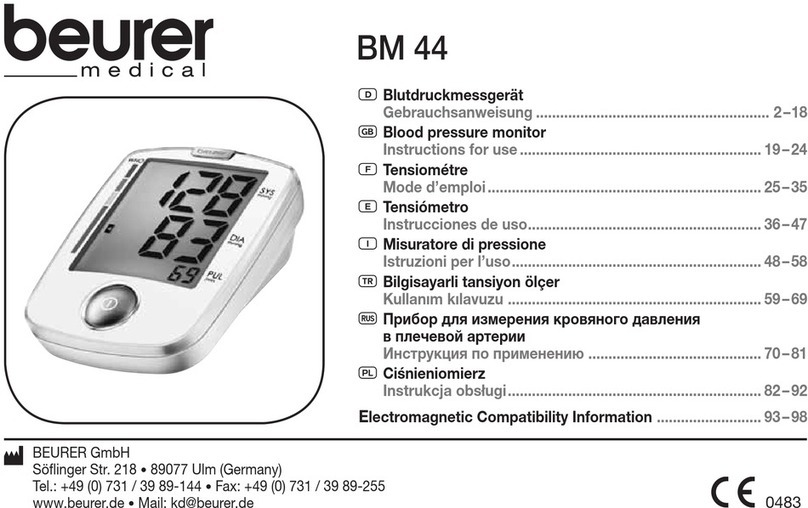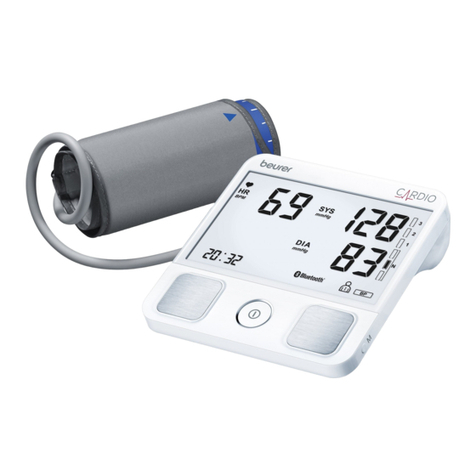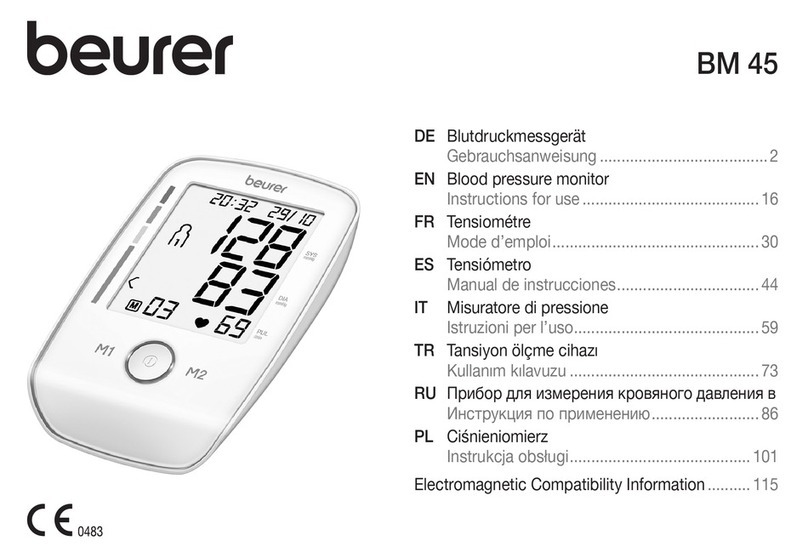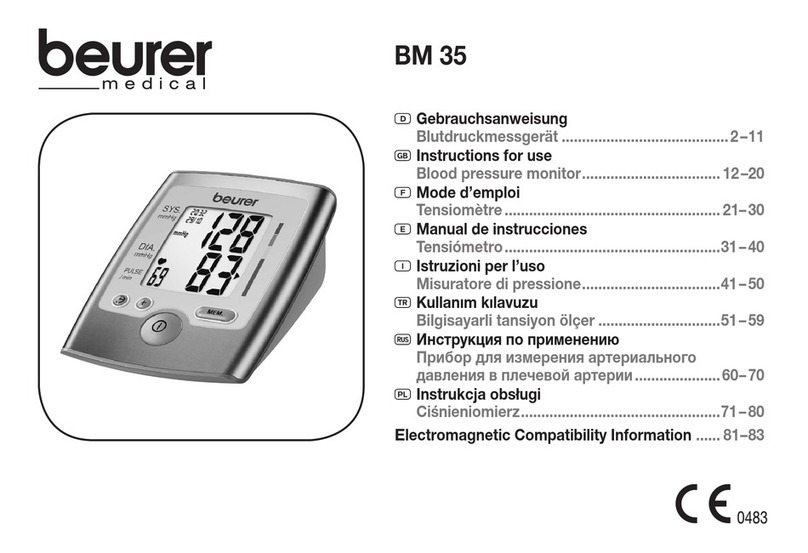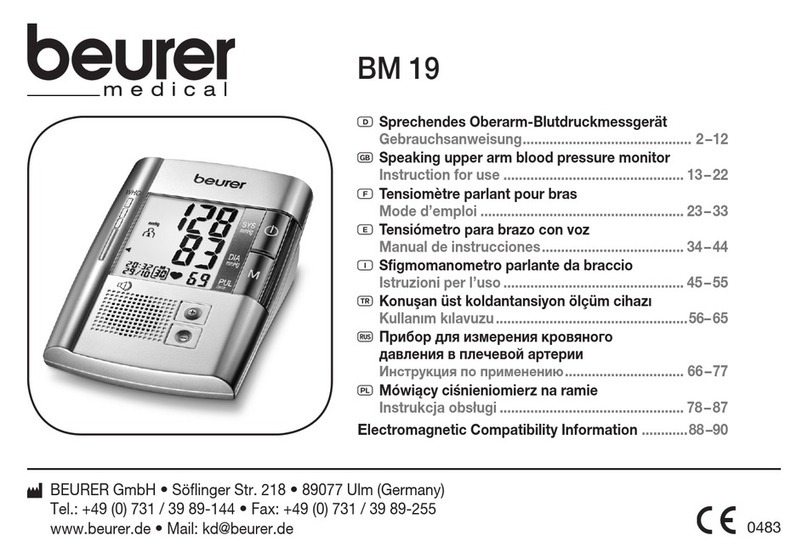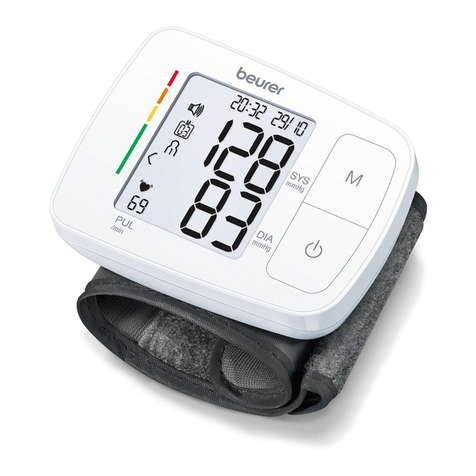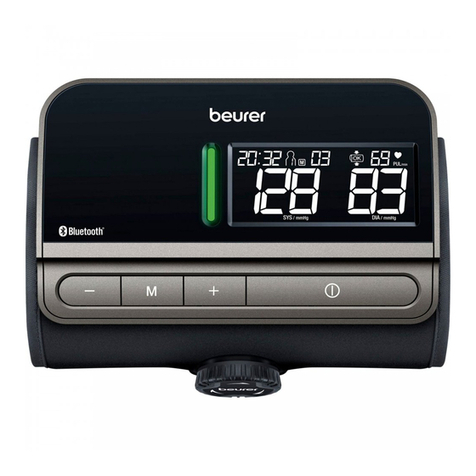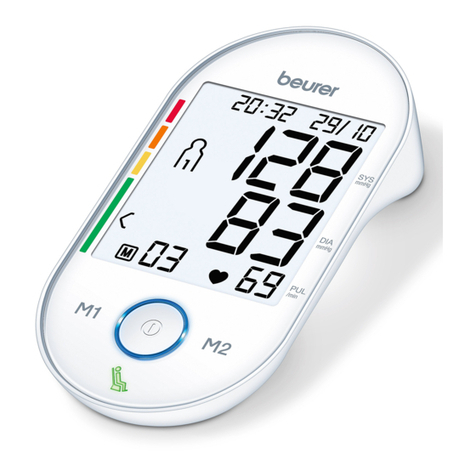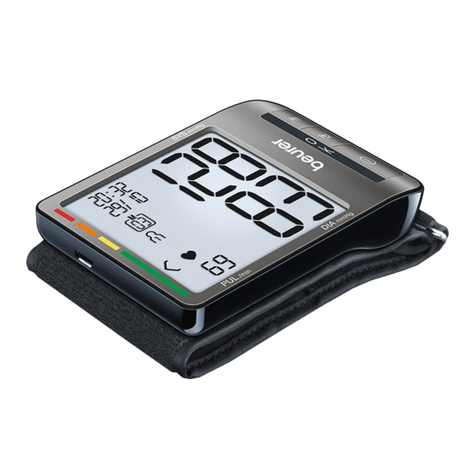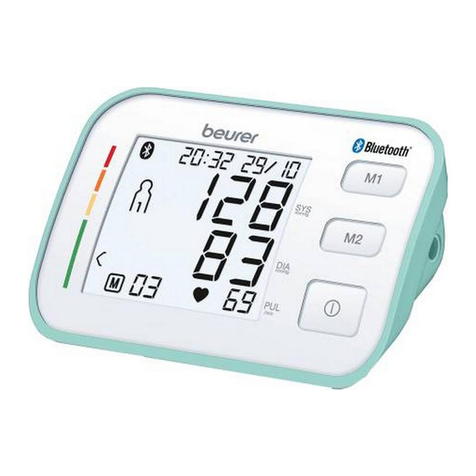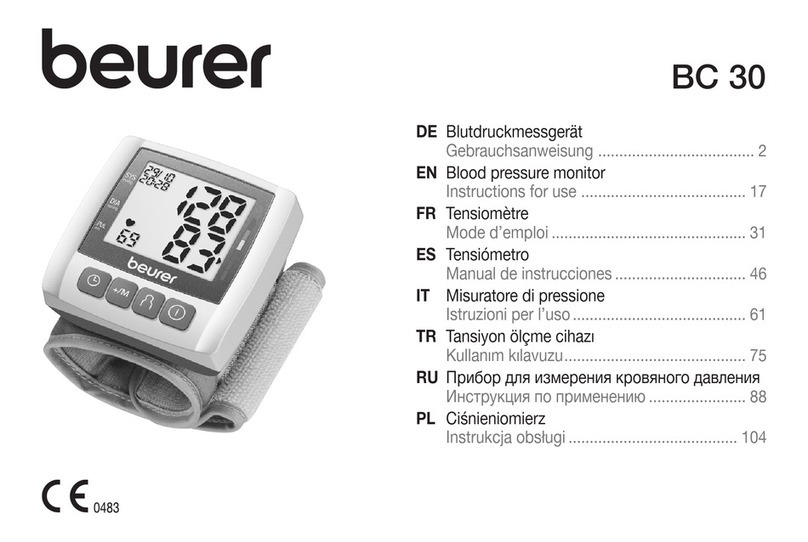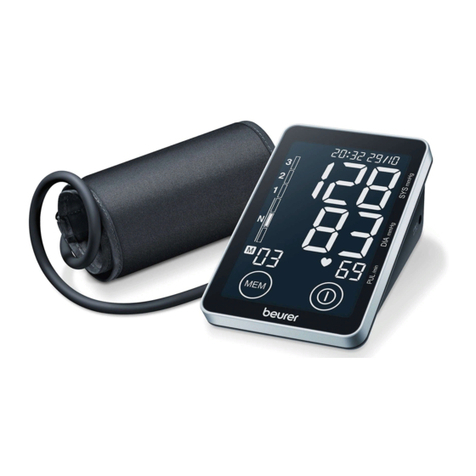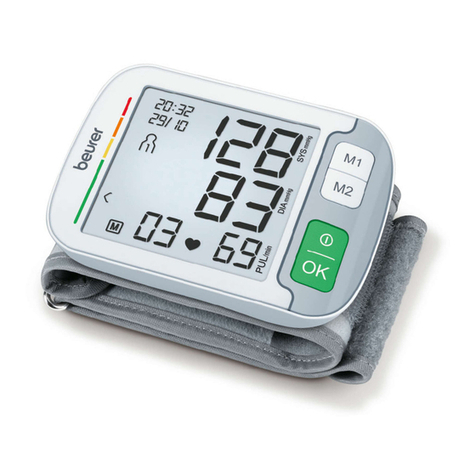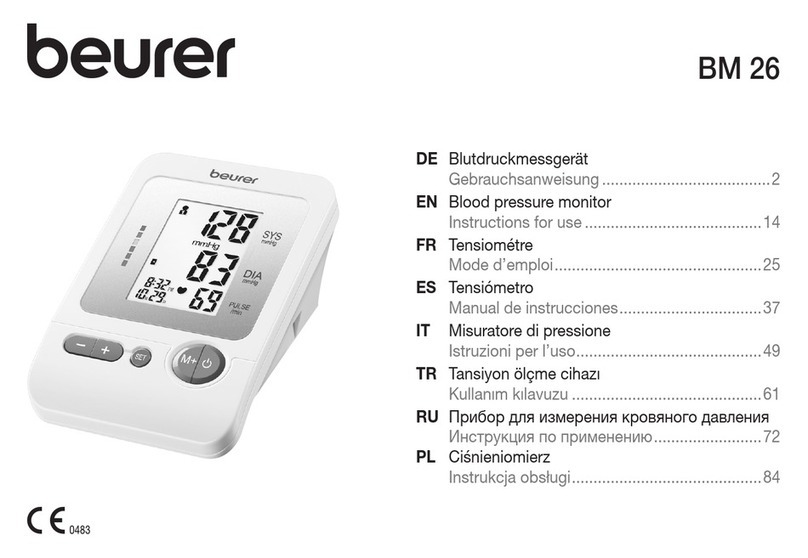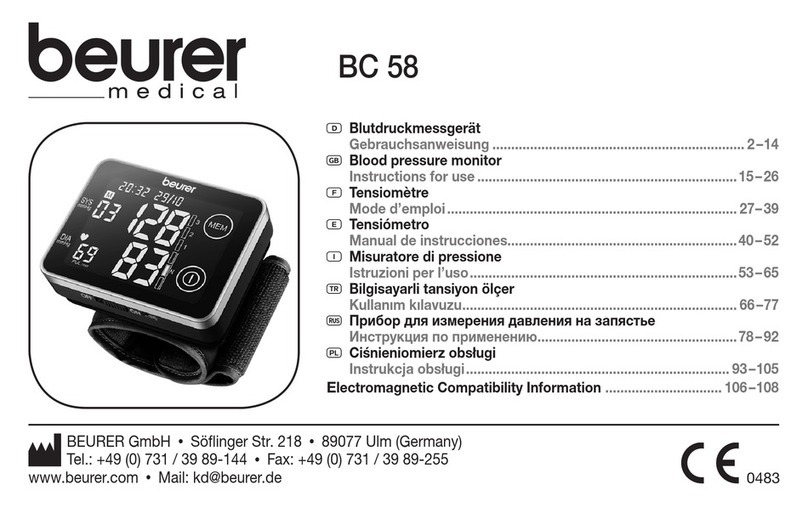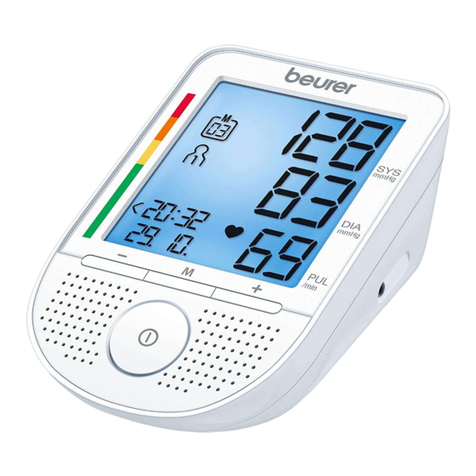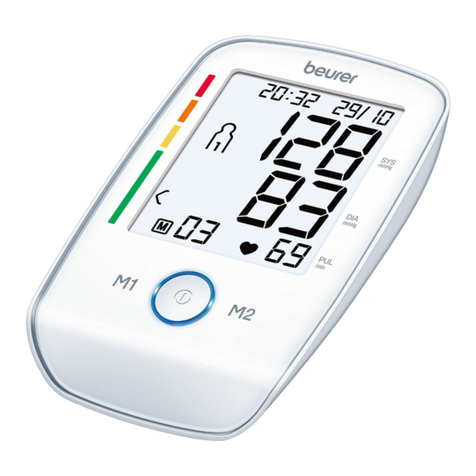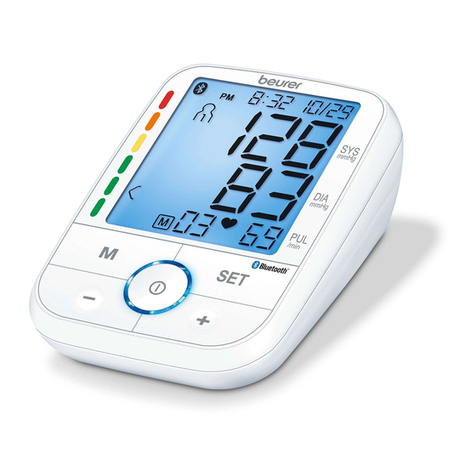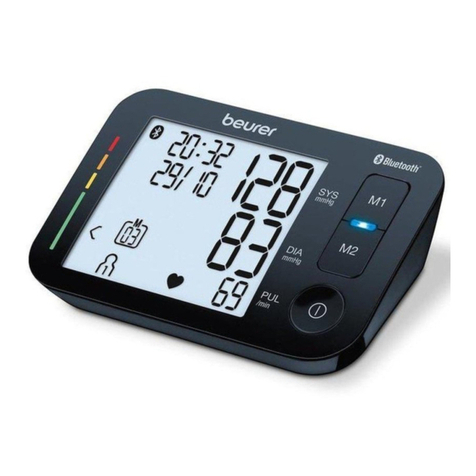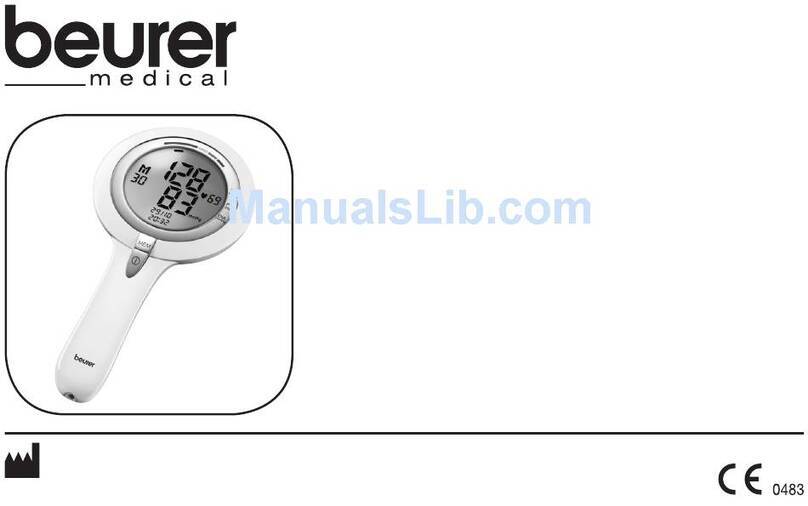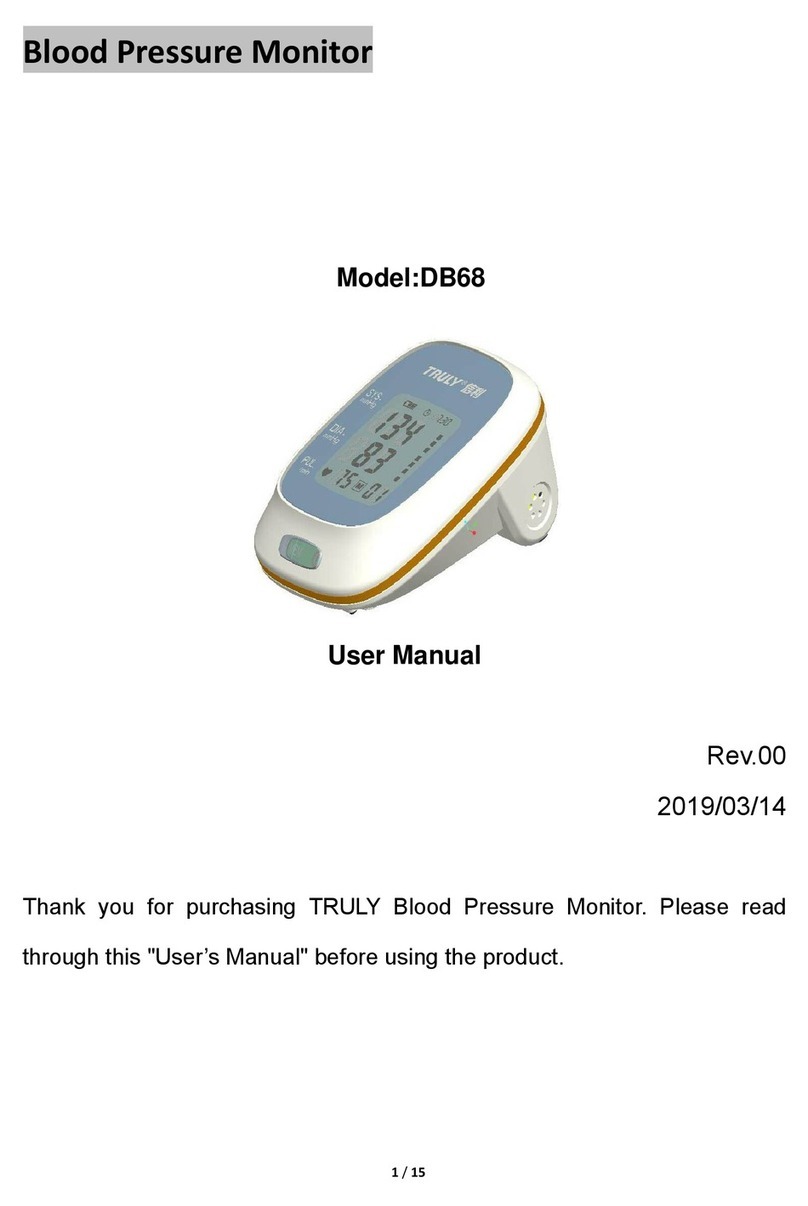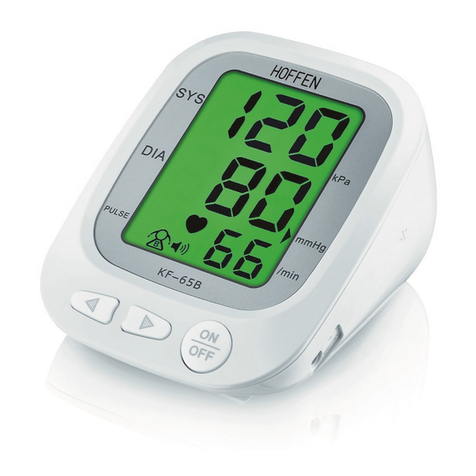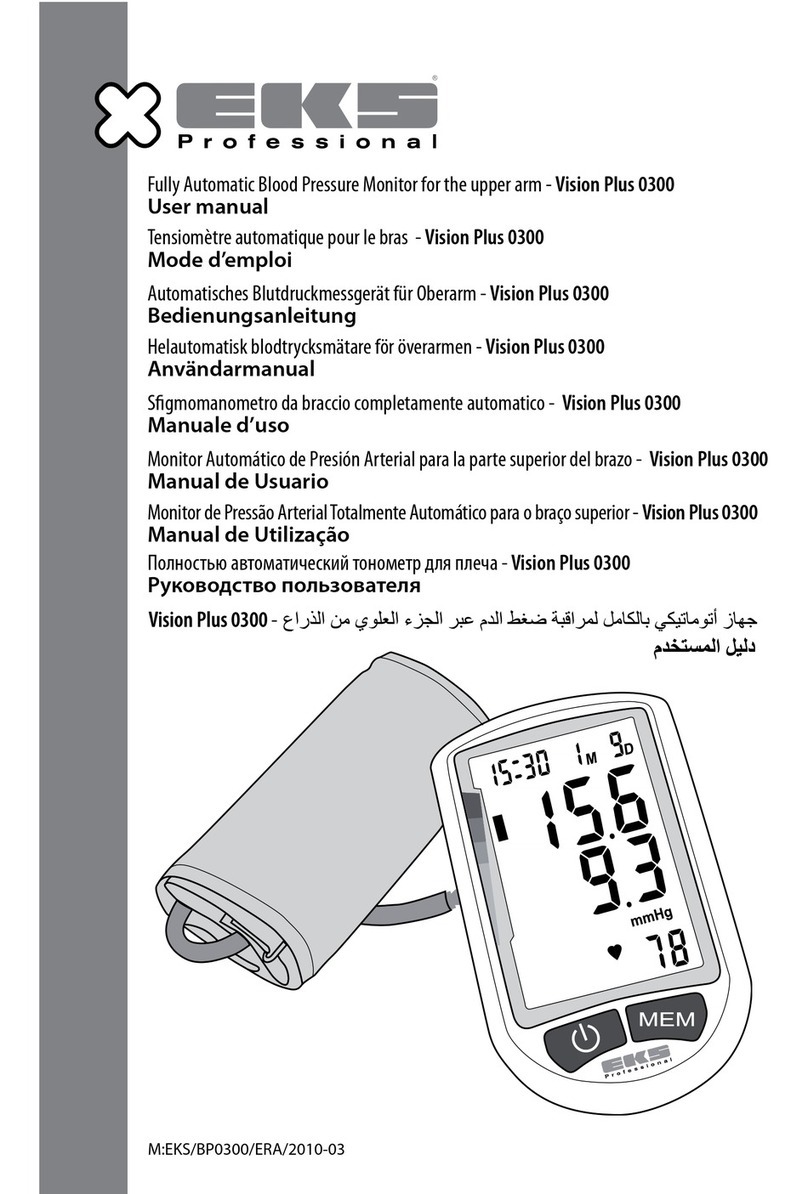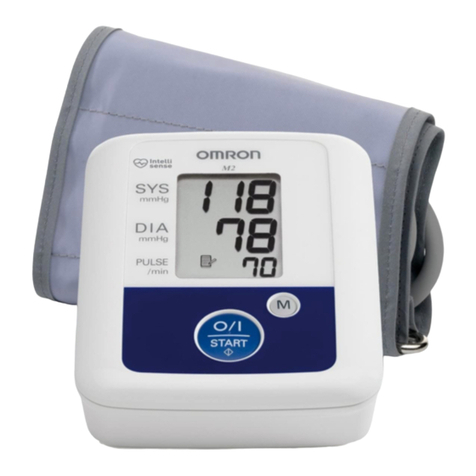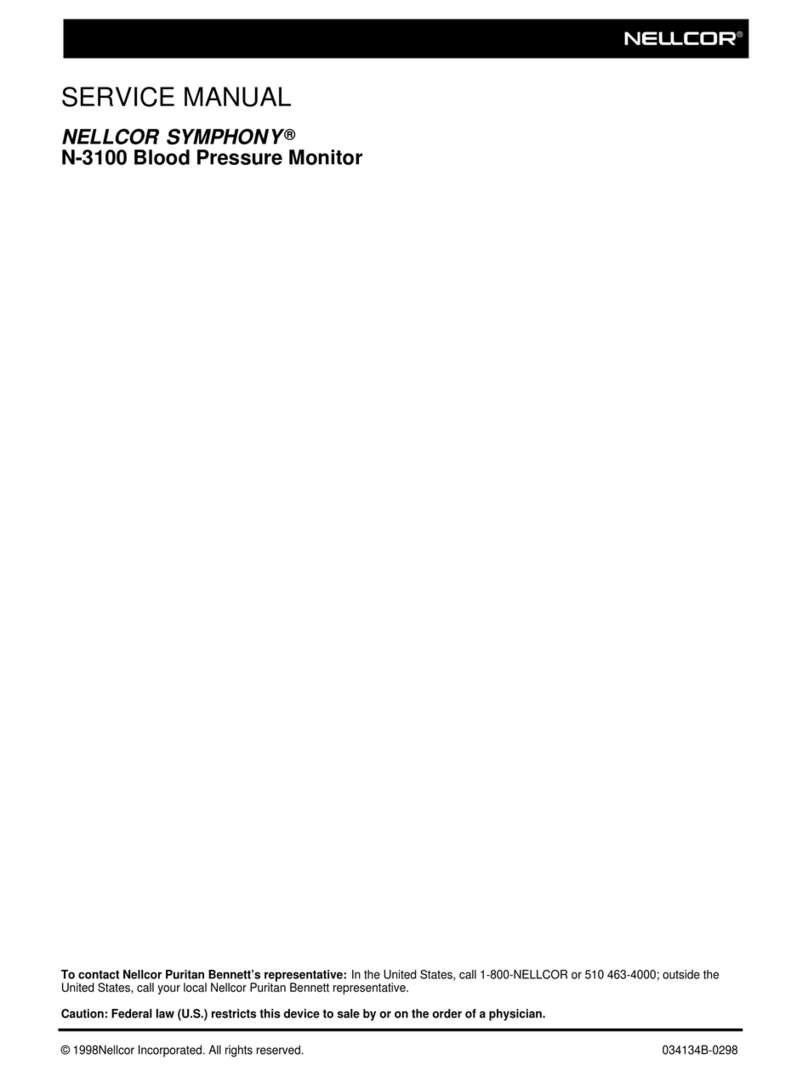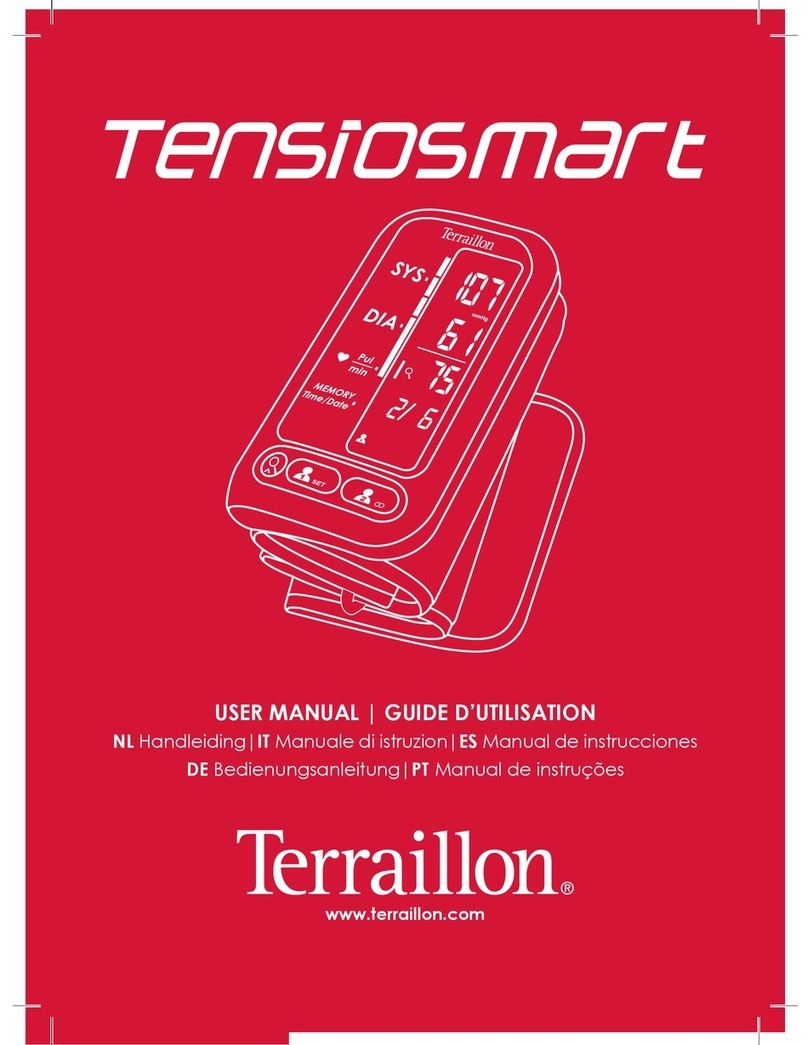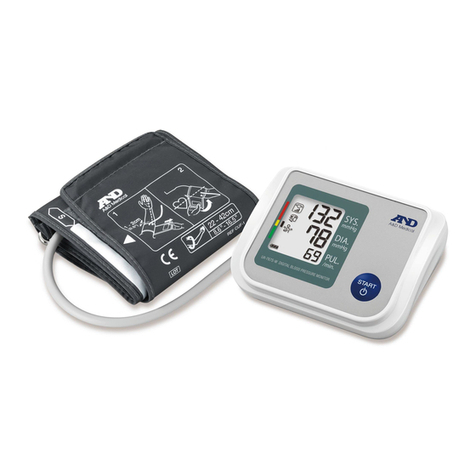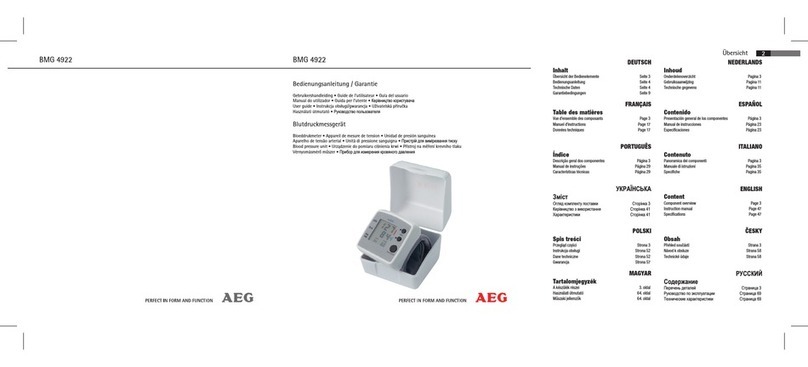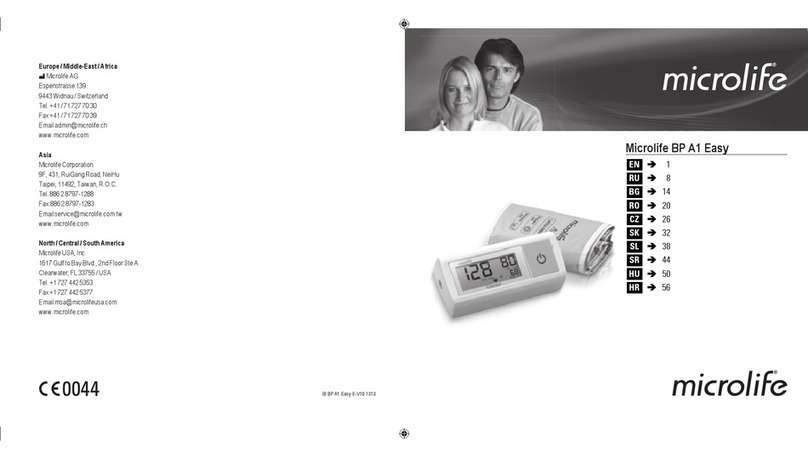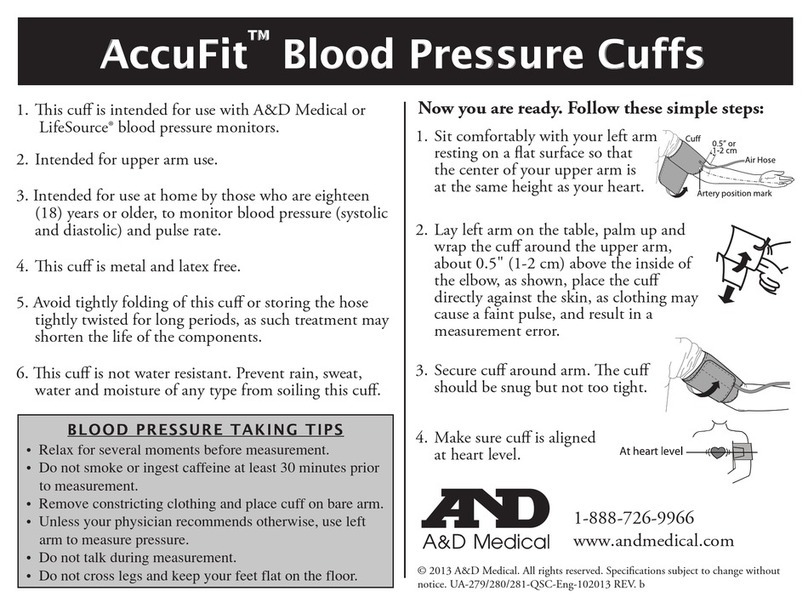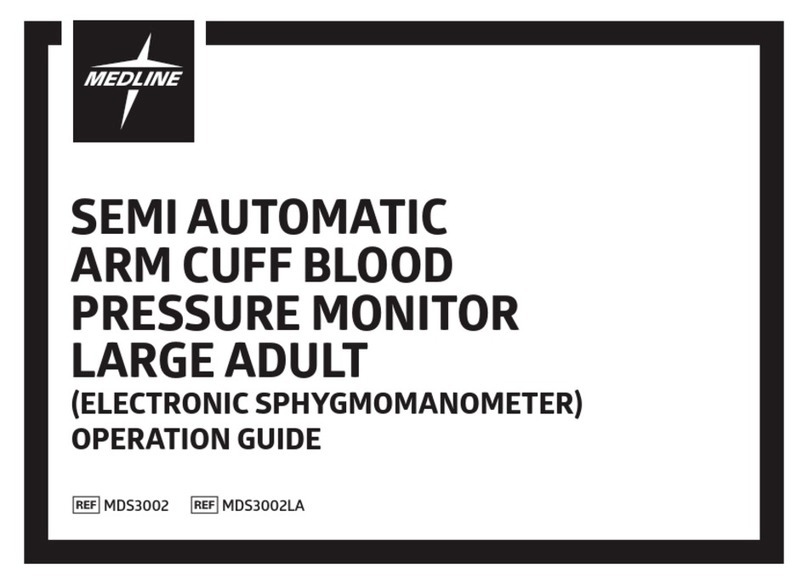3
Deutsch
1. Kennenlernen
Mit dem Blutdruckcomputer für das Handgelenk können Sie schnell und einfach Ihren Blutdruck messen,
die Messwerte abspeichern – und den Verlauf und Durchschnitt der Messwerte anzeigen lassen. Das Gerät
dient zur nichtinvasiven Messung und Überwachung Ihrer arteriellen Blutdruckwerte.
Das Gerät entspricht den Anforderungen der europäischen Richtlinie für Medizinprodukte, dem Medizin-
produktegesetz, sowie den europäischen Normen EN1060-1 (nichtinvasive Blutdruckmessgeräte Teil 1:
Allgemeine Anforderungen) EN1060-3 (nichtinvasive Blutdruckmessgeräte Teil 3: Ergänzende Anfor-
derungen für elekromechanische Blutdruckmesssysteme). Entsprechend der „Betreiberverordnung für
Medizinprodukte“ sind regelmäßige messtechnische Kontrollen durchzuführen, wenn das Gerät zu gewerb-
lichen oder wirtschaftlichen Zwecken eingesetzt wird. Auch bei privater Benutzung empfehlen wir Ihnen
eine messtechnische Kontrolle in 2-Jahres-Abständen beim Hersteller.
Bewahren Sie diese Gebrauchsanleitung für weitere Benutzung auf und machen sie diese auch anderen
Benutzern zugänglich.
Vorsicht – Zu Ihrer Sicherheit!
• Messen Sie Ihren Blutdruck immer zu gleichen Tageszeiten, um eine Vergleichbarkeit der Werte zu
gewährleisten
• Ruhen Sie sich vor jeder Messung ca. 3 – 5 Minuten aus!
• Zwischen zwei Messungen sollten Sie 5 Minuten warten!
• Die von Ihnen selbst ermittelten Messwerte können nur zu Ihrer Information dienen – sie ersetzen
keine ärztliche Untersuchung! Besprechen Sie Ihre Messwerte mit dem Arzt, begründen Sie daraus auf
keinen Fall eigene medizinische Entscheidungen (z.B. Medikamente und deren Dosierungen)!
• Bei Einschränkungen der Durchblutung an einem Arm aufgrund Chronischer oder akkuter
Gefäßerkrankungen (unter anderem Gefäßverengungen), ist die Genauigkeit der Hangelenksmessung
eingeschränkt. Weichen Sie in diesem Fall auf ein am Oberarm messendes Blutdruckmessgerät aus
(z.B. das DC 55 von Beurer).
• Es kann zu Fehlmessungen bei Erkrankungen des Herz-Kreislaufsystems kommen, ebenso bei sehr
niedrigem Blutdruck, Durchblutungs- und Rhytmusstörungen sowie bei weiteren Vorerkrankungen.
Das Blutdruck-Messgerät besteht aus Präzisions- und Elektronik-Bauteilen. Die Genauigkeit der
Messwerte und Lebensdauer des Gerätes hängt ab vom sorgfältigen Umgang:
- Sie sollten das Gerät vor Stößen schützen und nicht fallen lasssen,
- Vor Feuchtigkeit, Schmutz, starken Temperaturschwankungen und direkter Sonneneinstrahlung
schützen,
- Nicht in der Nähe von starken elektromagnetischen Feldern benutzen, also fernhalten von
Funkanlagen oder Mobiltelefonen
• Drücken Sie nicht auf Tasten, solange die Manschette nicht angelegt ist.
• Verwenden Sie das Gerät nur bei Personen mit dem für das Gerät angegebenen Umfangbereich des
Handgelenks
• Falls das Gerät über einen längeren Zeitraum nicht benutzt wird, wird empfohlen die Batterien zu
entfernen.
• Batterien dürfen nicht in die Hände von Kindern gelangen und gehören nicht in den Hausmüll.
• Bitte entsorgen Sie die verbrauchten Batterien an den dafür vorgesehenen Sammelstellen.
• Öffnen Sie nicht das Gerät. Bei nichtbeachten erlischt die Garantie. Das Gerät darf nicht selbst
repariert oder justiert werden. Eine einwandfreie Funktion ist in diesem Fall nicht mehr gewährleistet.
GA BC 42_multi.qxp3 27.04.2001 17:20 Uhr Seite 3
